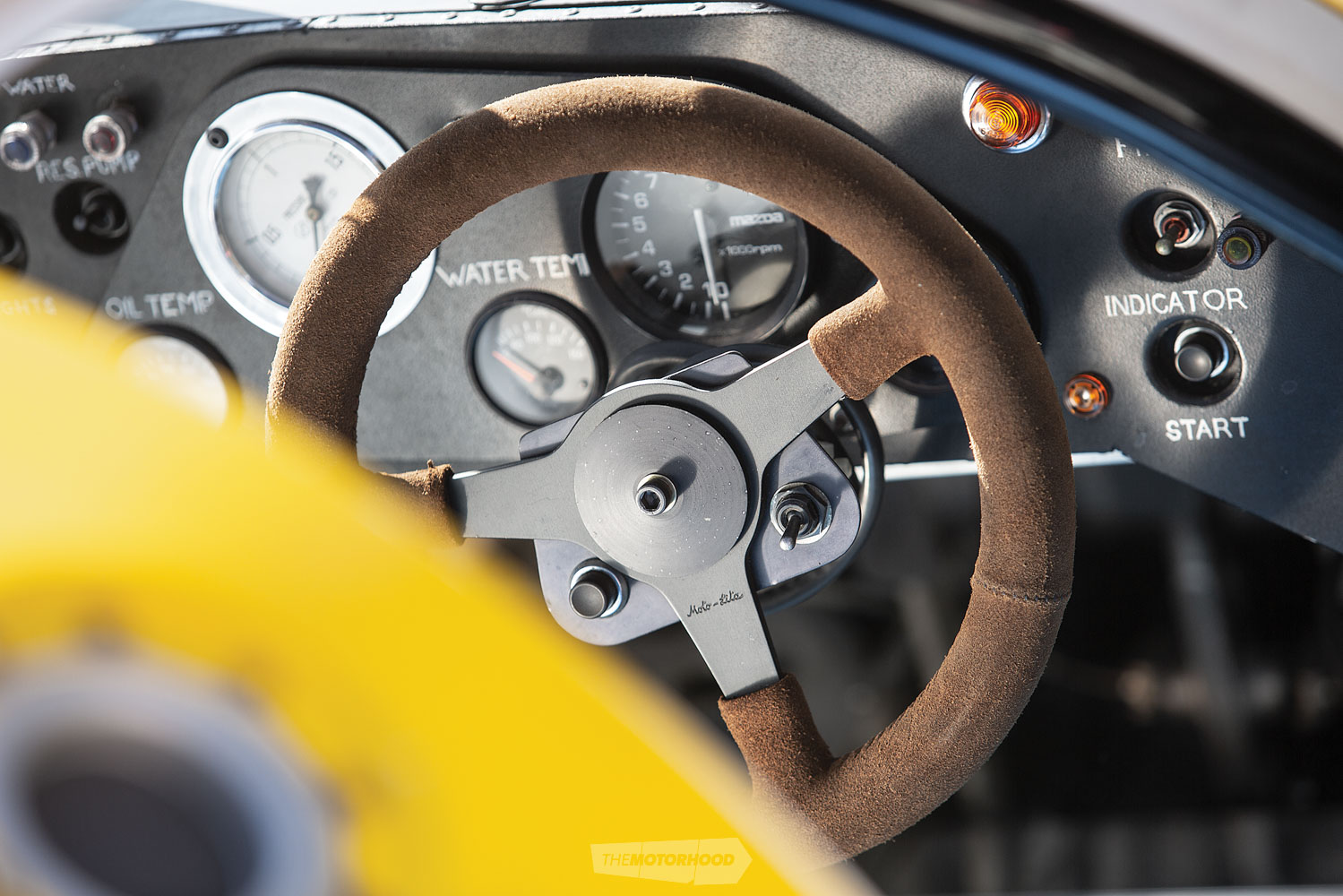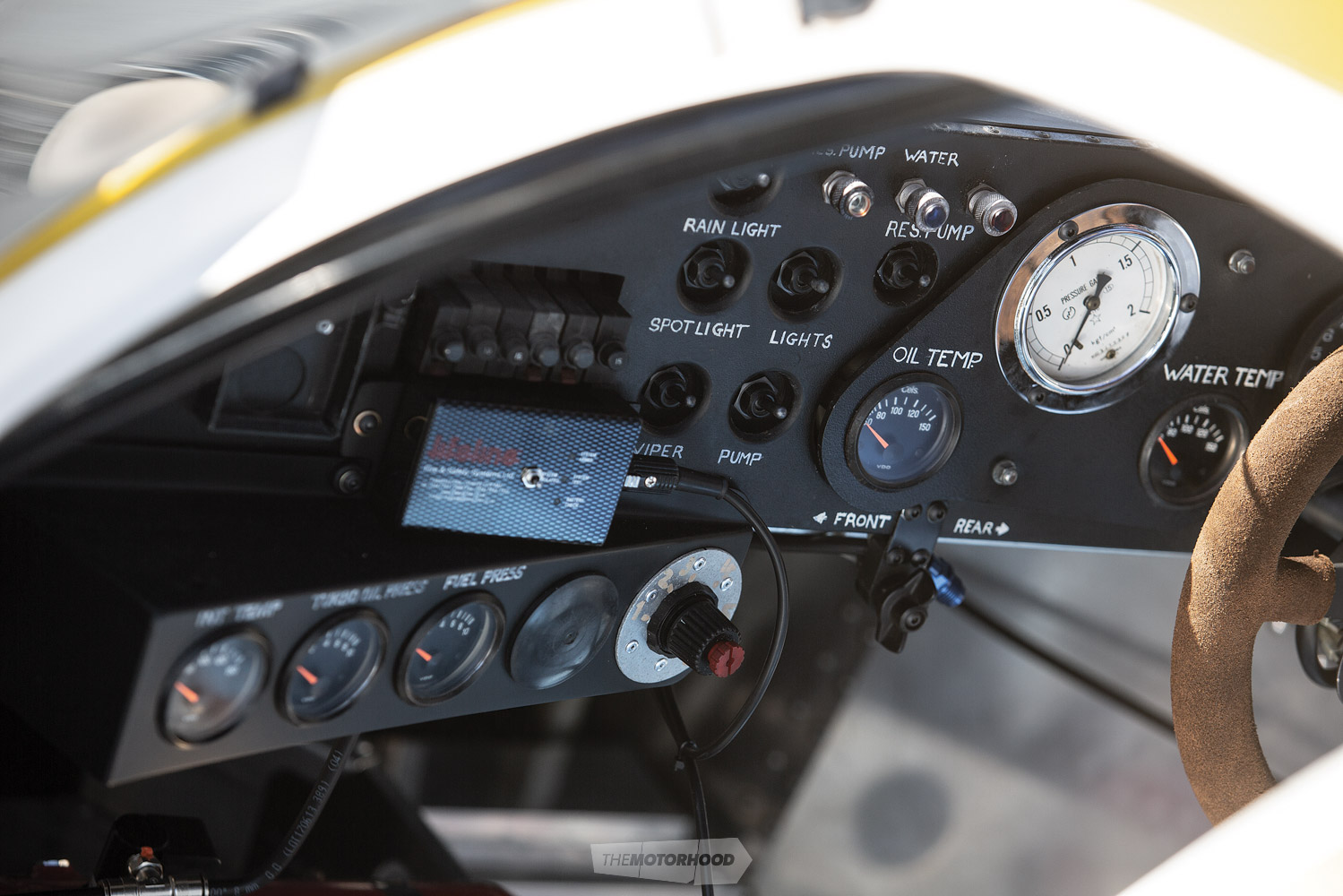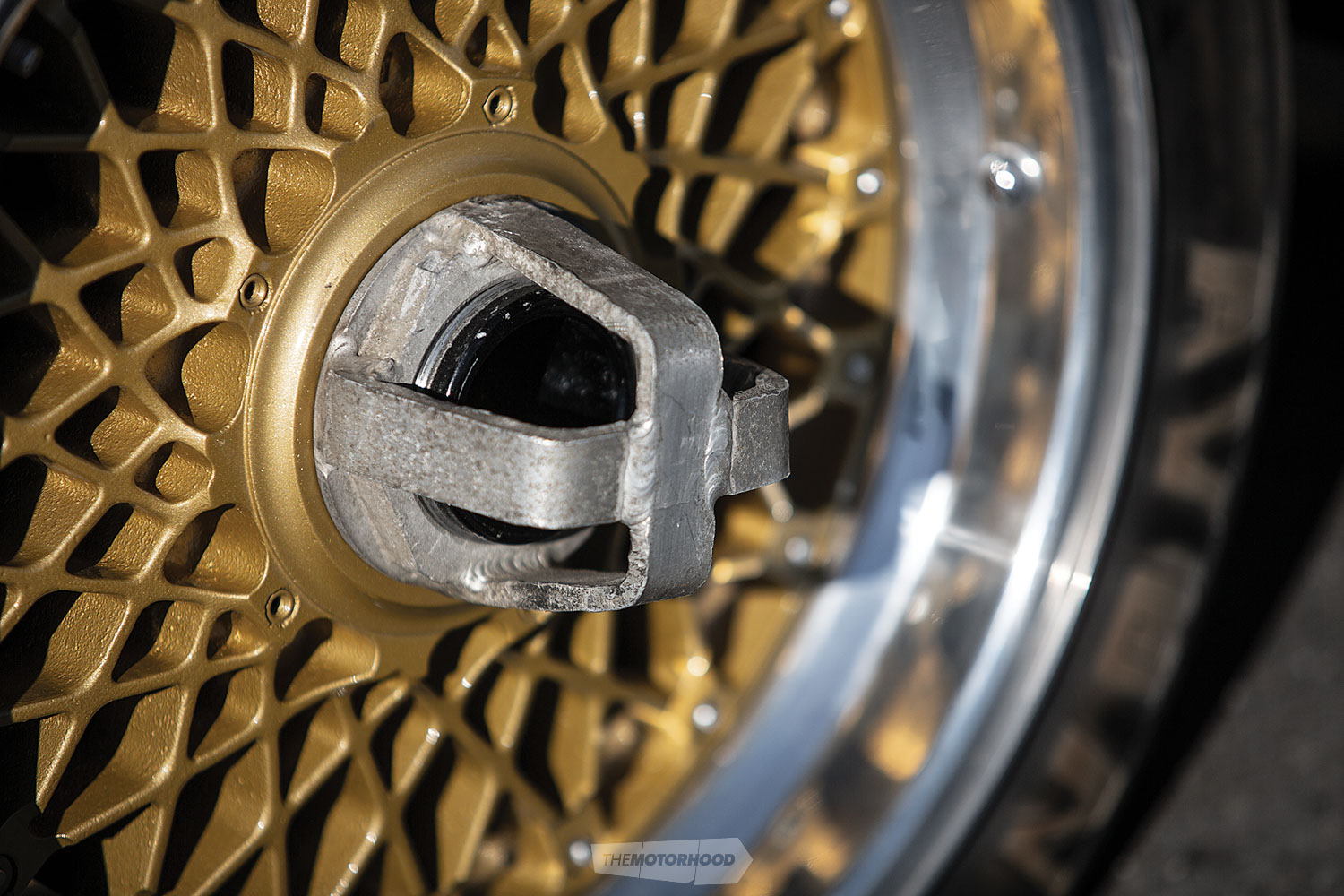It’s been four years since we watched as a near-rotten Mazdaspeed March 84G rolled out of the container from Japan. recently, It was time to see it return to the track after three decades

The old adage ‘It’s not what you know, it’s who you know’ never rings more true than in the world of cars. It’s through these connections that true gold can be unearthed or perhaps those parts that you simply can’t find anywhere for sale these days magically appear. So, when your circle of friends includes motorsport legends such as Yoshimi Katayama or T Okura, then those little gems tend to be some truly special pieces of Japanese automobilia, as evidenced by the string of Mazdas that Warwick and Andre Mortimer have purchased and imported over the years — cars that would never have been offered to the general public.
Of this lot, arguably the most important and significant piece has been the March 84G chassis No. 7, which Mazdaspeed campaigned for one race only: the 1984 Fuji 1000, with it surviving 153 laps of a possible 226 before a turbo failure ended Mazda’s hopes.
It was Mazda’s first and only foray into turbocharging their rotary Group C racers, seemingly built as a test mule in between running the 1984 727C and 1985 737C, both N/A 13Bs. While the did-not-finish (DNF) at Fuji might be seen by many as a failure, to Mazda, it was an important stepping stone in rotary-engine development, this being a serious road test for the first 13B turbo power plant, which would later find its way into the FC3S RX-7 chassis.

The failure at Fuji was the one and only time that chassis No. 7 was raced before it was gifted to driver Yoshimi Katayama for his service to Mazda’s race efforts. The car would lie dormant for decades, first on show in Yoshimi’s Kobe Mazda dealership, then later stashed in his storage facility. The car could have been lost forever had it not been moved when it was, as, strangely, only a week after it was shifted to another storage location, the facility was crushed as a result of the ’95 Kobe earthquake. Sadly, all the spares for the March were lost as a result. It would be almost another decade before the March moved again, this time into a container destined for Matakana, New Zealand.
It was evident even before the rebuild began that this would be no small feat. While the car was 100-per-cent complete, with not a single part missing, its dormant time had not been kind to it, and the car was close to the point of disrepair when it landed in 2015. Early plans were to get it rebuilt and ready to race inside a year, but the more deeply that the team looked at it, the bigger the restoration time frame became.

Headed up by Mortimer Motorsport’s long-time head mechanic Garry Roper, the restoration became a fastidious project to exacting details, as close to the ’84 spec as possible, despite the fact that many parts were completely rotten. A painstaking process began that would span three years of Garry’s life, in between the rest of his racing duties at Mortimer Motorsport.
Work began with the tub itself. Built in a time before carbon was widely used in race car construction, the March consists of an aluminium honeycomb monocoque chassis and a fibreglass body. Having stripped the Mazda completely bare, Gary and the team could assess the neglect and make a game plan.
The engine is now based on a Series 6 block with bridgeported plates and balanced rotating assembly. An EFI Hardware throttle body sits on an IDA manifold, replacing the old mechanical injection set-up, which had rotted away

Period glues and rivets were located, surprisingly close to home. However, with many of the magnesium suspension components in complete disrepair, replicas needed to be constructed with the help of BSL Racing and Salter Fabrication. Tubular components were drilled to inspect internally for rot and replicated if necessary.
Much like the chassis rot, the old fibreglass body had seen better days. Early on, the plan had been to run the replacement body, which had been purchased out of the UK, but it was found not to fit all that well and would require some serious adjustments. The solution — and one that we think the project is all the better for — was to reuse the old body and simply matte-clear it in all its unmolested glory, complete with half-peeled and cracked sponsor stickers. The result gives the car a real sense of history and complements all the shiny new underpinnings perfectly.

The world’s first 13b turbo
The original engine combination from the failed Fuji campaign remained in the car. A prototype 13B twin-turbo, with a unique configuration seeing the turbos mounted over the rear axle, and a top-mounted intercooler. The 13B itself was a prototype block, with intake-port locations higher in the plates than we’ve seen in any production-based 13B turbo that succeeded it. Rather than attempt to resurrect the old engine, which was deemed too valuable to tear apart, a new 13B based around a Series 6 13B was race prepared by Grant Munro from Rotorsport Racing and Engine Balancing. It was bridgeported, just as the original had been, Grant commenting that some serious, and impressive, work had gone into the original porting. Sadly, some original components were just too far gone, such as the injection system.

“We pretty much just replicated what was there but modernized it somewhat,’’ says Grant. In its place is an EFI Hardware throttle body with IDA manifold. Thankfully, some pieces, such as the Mazdaspeed dry-sump front cover, were salvageable. The turbos, which, strangely, are Hitachi units with ‘20B’ cast into the compressor housing — take from that what you will — were rebuilt locally at MSE and sit on a manifold that replicates the original, with extremely long runners.
Dtech Motorsport was brought in late in the resto to handle the electronics and tuning. Dave and his team elected to use an Emtron SL8 and IGN1A coils, and construct a Mil-Spec loom. One thing that Dave would have liked to do was retain the distributor from the original build, and that could be something that is changed in the future. The Emtron has been hidden out of sight under the tub, and all the factory gauges have been restored to working condition so as not to distract from the resto.
When it came to tuning the car, Dave was somewhat hamstrung by the original layout; the placement of items such as the exhaust manifold and the wastegate was not ideal given the knowledge we now have. Then again, this is not about making a modern race car. Some stuff couldn’t be overlooked, though — such as the team discovering the way that the twin-turbos were plumbed, using a T-piece rather than a Y-piece, which would have given the turbos equal pressure and volume. The oil pickup was moved to the front cover to give more volume. If all this had been done back in ’84, it could have changed Mazda’s whole development trajectory.

Nicknamed ‘the lobster claw’ thanks to the large opening in the front end feeding the large rear diffuser. The March 84G features an aluminium honeycomb monocoque chassis, double-wishbone suspension, and a rear transaxle. This was the last of the 84 cars built, with most running Chevrolet-based V8s as opposed to the small 1300cc Mazda
“We weren’t chasing the tune, really, just trying to make it run smoothly. It’s only running 14–15psi at the moment, it’s a bit lazy, but we are stuck with the design of many parts. If you were going to race it, you’d probably change a bunch of stuff,” Dave says.
He reckons that the biggest hurdle the car will face on its debut at Goodwood Festival of Speed is the gearing, which is for longer tracks like Fuji and Le Mans, as opposed to a tight driveway, where it’s not likely to make it out of the first gear, making it extremely difficult to drive.
Ahead of the March being loaded into the container for Britain, a short shakedown at Hamptons Downs with Warwick Mortimer behind the wheel with a makeshift seat gave the team the chance to tweak a few things in the tune and overcome some other bugs. However, with such a tight time frame, Dave was forced to shelve a few things that he wanted to complete; jobs that will probably be done on the car’s return — if the car returns, that is.
Offers have come in already, so we may not see the March return to our shores if the right figure is penned onto a cheque; time will tell. If it’s not sold, there are plans for some other big events in the US and Japan before it comes home to Matakana.












